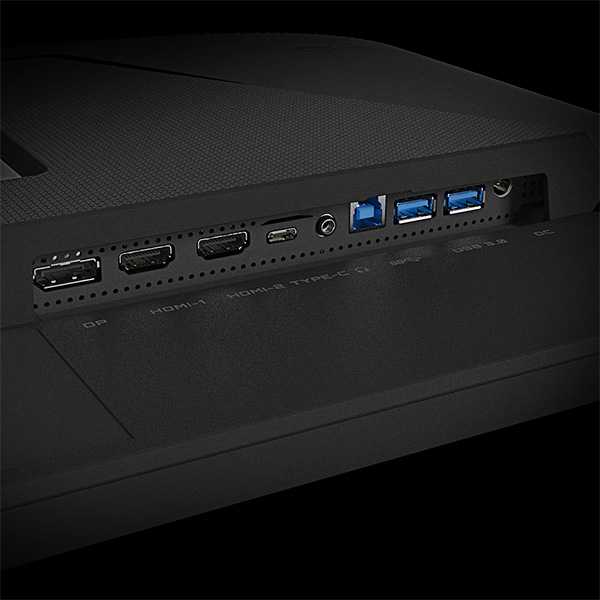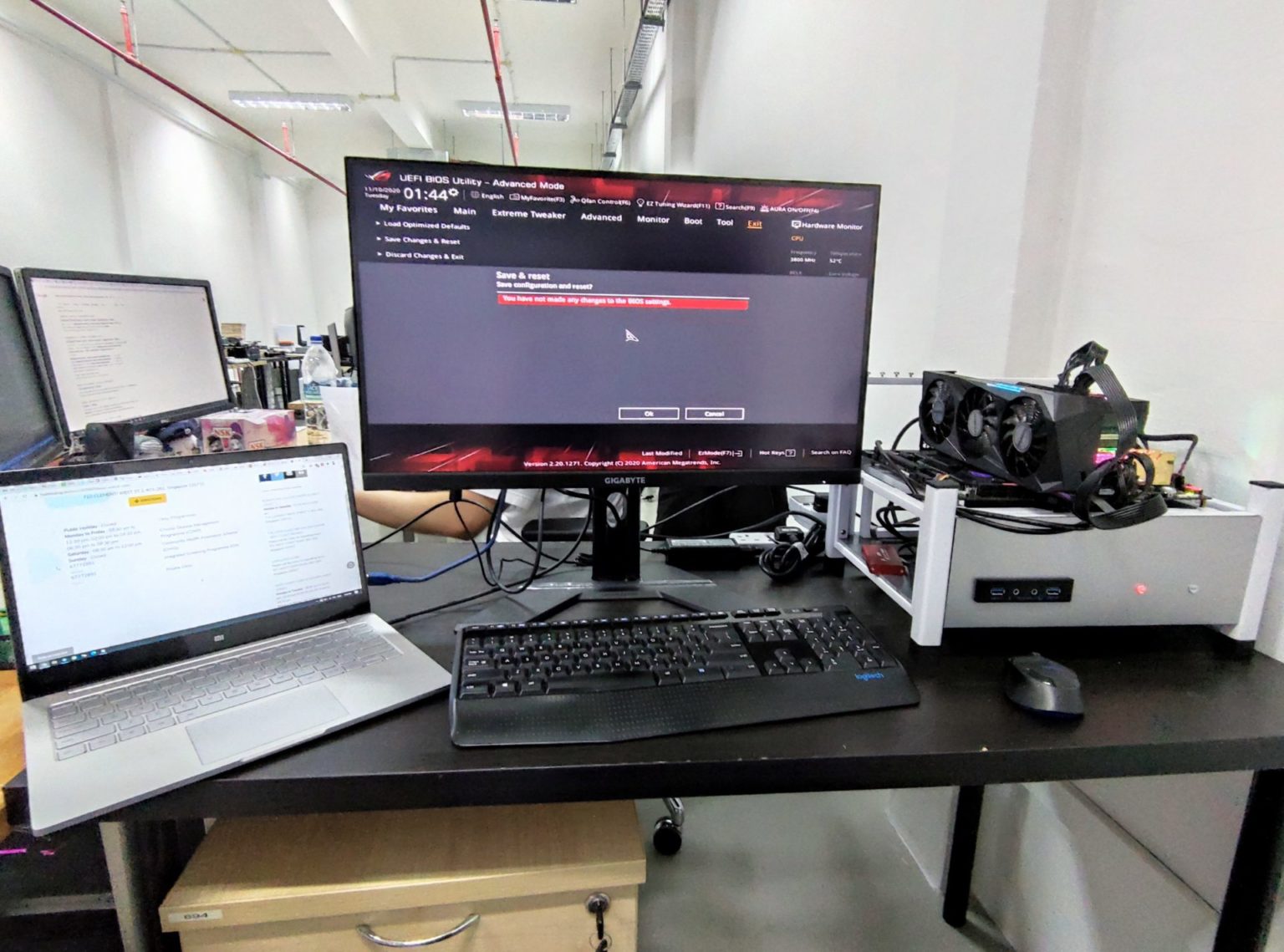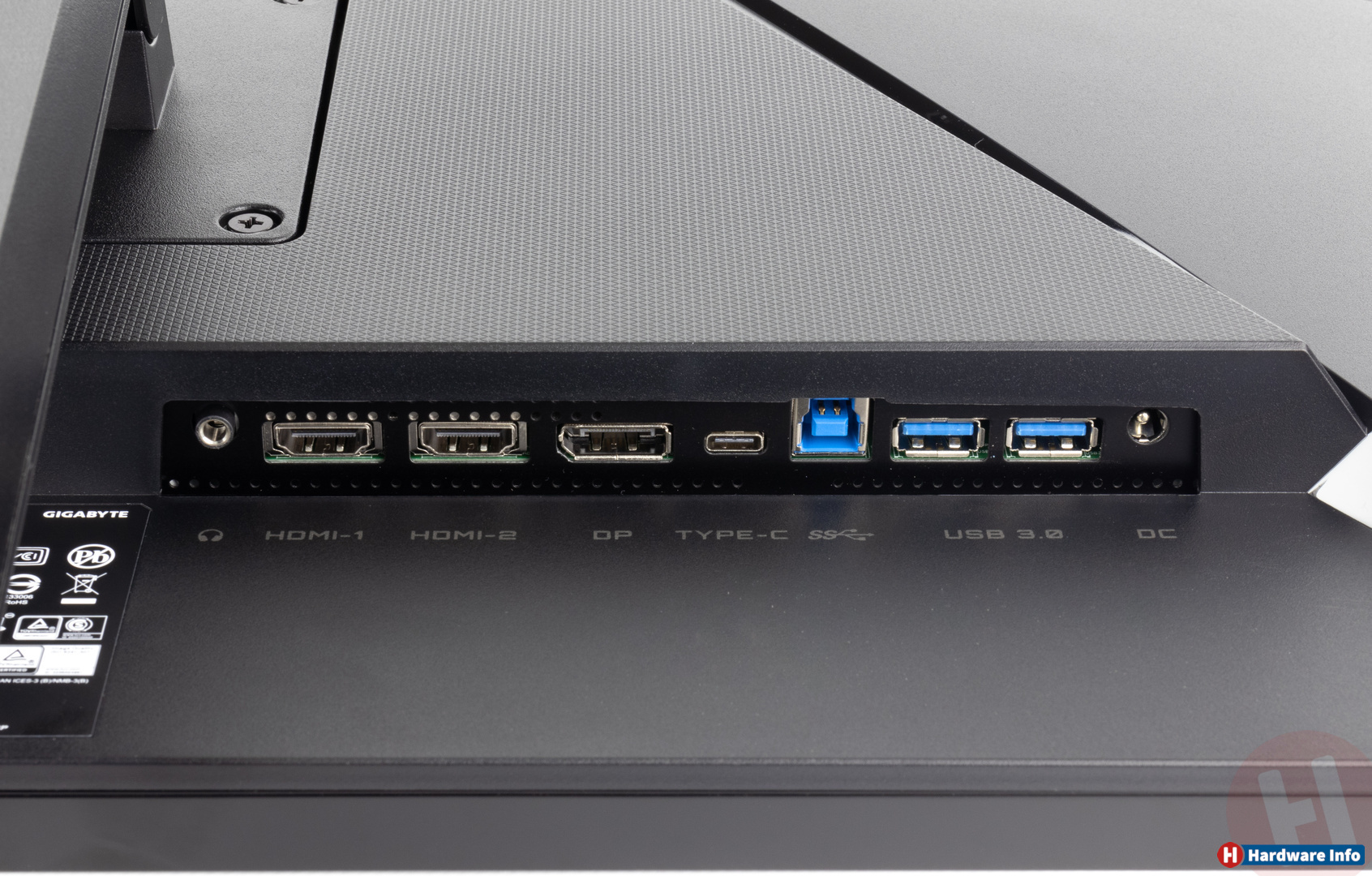

Most of the KVM-capable monitors I’ve seen have four.

I say this because there are only two USB downstream ports, which seems a little light. Underneath, you’ll find a reasonably well-stocked input panel. Unfortunately, there are no USB ports on either side. Compared to most I’ve reviewed, it’s about one inch shallower. The M27Q X is a bit thinner than typical 27-inch flat panels. And you can manage that functionality in the OSD. A KVM button switches between the connected systems. A small joystick controls the OSD and toggles power. A few lines are molded into the plastic as accents, and you can see the model designator there too. The back is finished at the top with a polished strip featuring the Gigabyte logo in white ink. The anti-glare layer is matte and keeps reflections at bay while maintaining a sharp, grain-free image. The panel can be placed high enough to use vertically with the eyepoint at center-screen. There is no portrait or swivel functionality. The upright is a solid piece with a 130mm height adjustment and 5/20 degrees of tilt. All parts are finished in matte-textured plastic. The M27Q X features simple and unassuming styling with an 8mm-wide flush bezel for the main panel and angular accents on the triangular base. Also in the box is a small external power supply. Since KVM and USB-C are part of the feature list, I expected a USB-C cable, but there was none. The in-box cable bundle has DisplayPort, HDMI and USB-A to B.

You’ll need to source your own fasteners for it though.

If you’d rather use your own stand or arm, a 100mm VESA mount is provided. The M27Q X assembles easily with a captive bolt to join the base and upright, and a panel that snaps into place. The M27Q X is a full-featured display that looks to provide an ideal balance of resolution and speed. And with two HDMI 2.0 and a DisplayPort 1.4, you can run 10-bit color and HDR up to the full 240 Hz. If you run multiple PCs, an included KVM feature has a USB-C input that can provide power, video and peripheral support. The only limitation is that it’s not available in HDR mode. It’s one of the few monitors that lets you use the strobe in concert with Adaptive-Sync. The M27Q X has a blur reduction backlight strobe feature called Aim Stabilizer. Out-of-box color is accurate enough that calibration is not required. Like its predecessor, there is no dynamic contrast, so HDR in this case doesn’t look much different than SDR. HDR10 signals are supported up to a peak white level of 526 nits, earning it VESA DisplayHDR 400 certification. There is a caveat, though, that I'll touch on later in the color gamut tests. The color gamut is advertised as “Super Wide,” and it does indeed cover nearly 103% of DCI-P3. The M27Q X starts with an IPS panel made by Sharp with native 10-bit color, QHD resolution and 240 Hz max refresh. Gigabyte M27Q X (Black) at Amazon for $357.06 (opens in new tab).


 0 kommentar(er)
0 kommentar(er)
